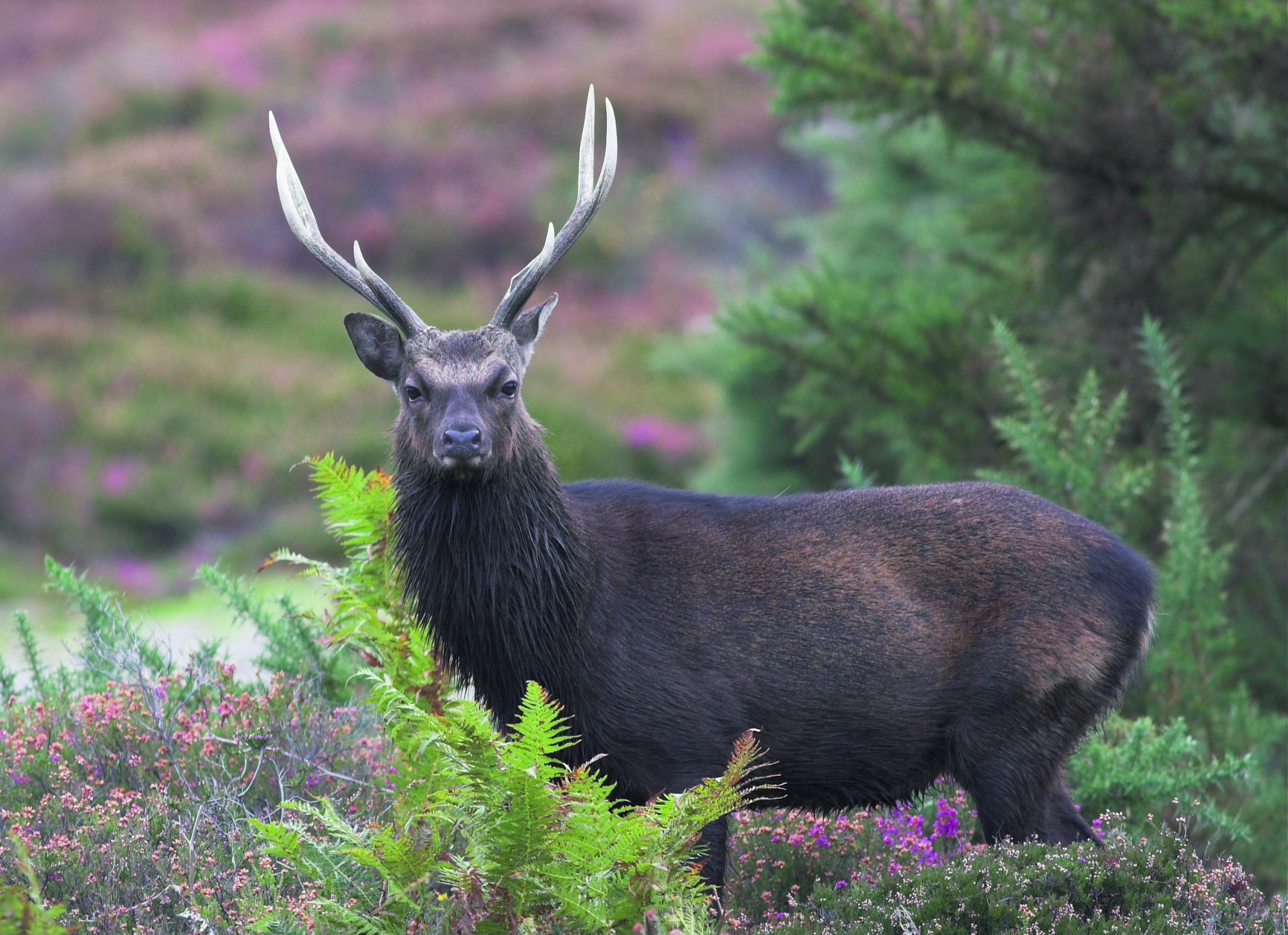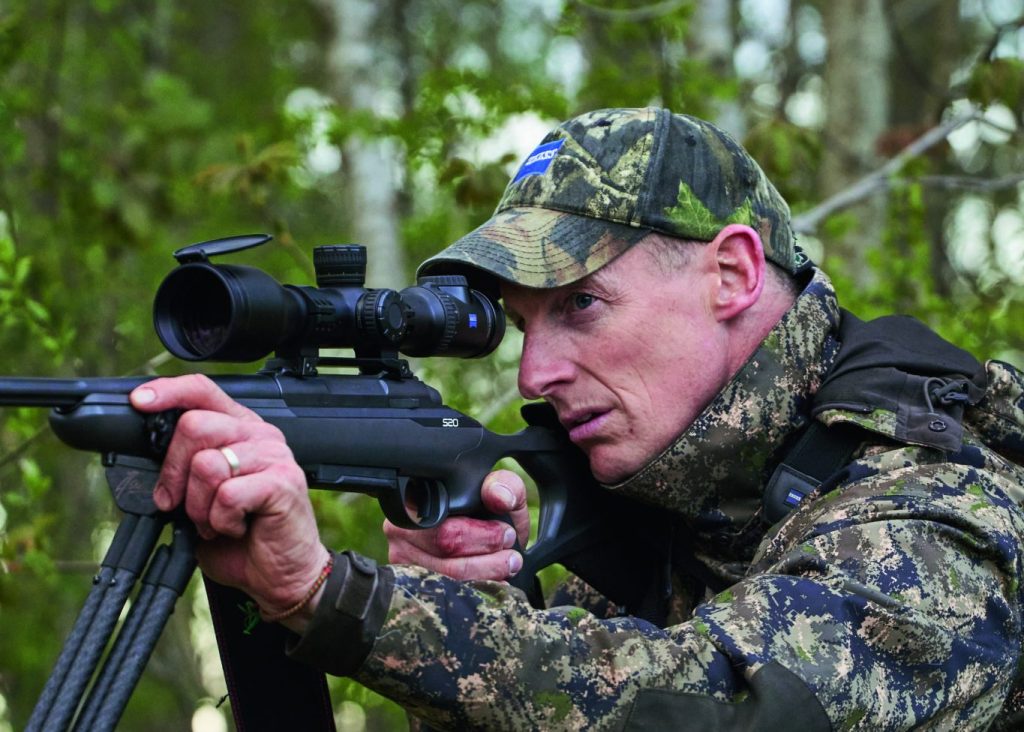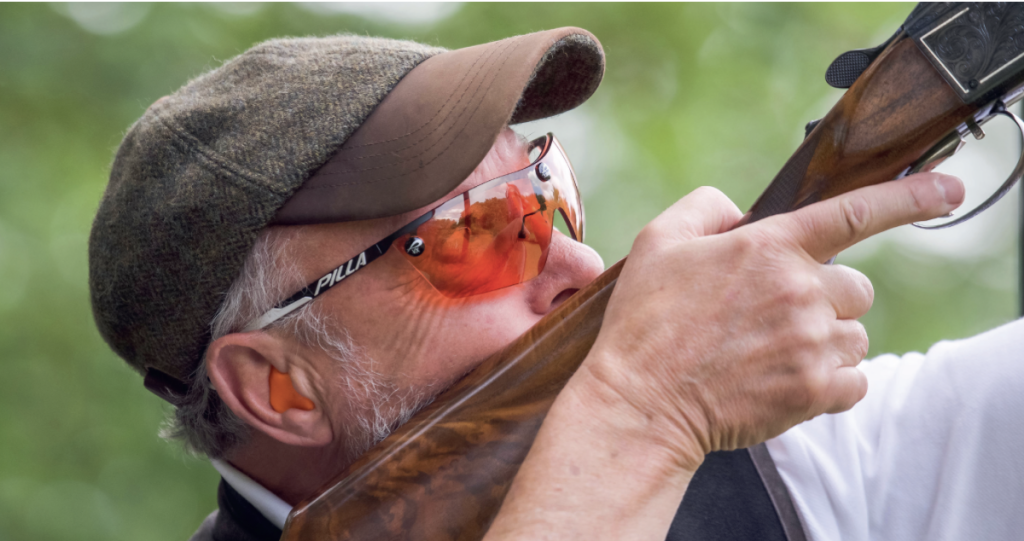Shooting
Shotgun
Shotgun news
Pheasant release pens: here’s what you need to know about them
Would you like to speak to our readers? We offer sponsored articles and advertising to put you in front of our audience. Find out more.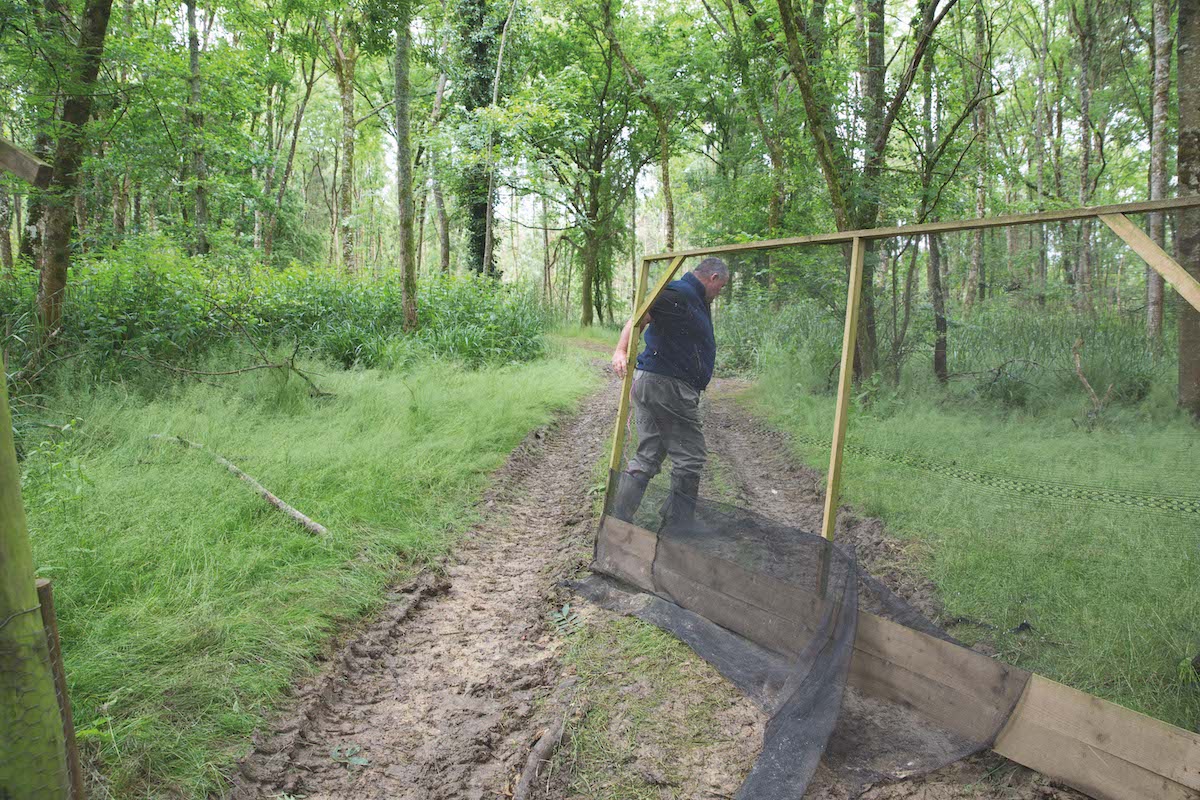 A track that leads into the pen is useful for moving feed, water and equipment. It can pay to put a lock on release pen gates that may deter unwelcome guests
A track that leads into the pen is useful for moving feed, water and equipment. It can pay to put a lock on release pen gates that may deter unwelcome guests
Top tips for pheasant release pens
- If a pen gets seriously muddy during wet weather, it is better to let the birds out to prevent disease setting in
- Make pheasant release pens as large as possible with mixed cover and low stocking densities
- Ensure a constant and clean water supply
- Clear up any rubbish. Don’t leave old hoppers, string and water drinkers lying around. They are an eyesore and reflect badly on gamekeeping
- Formulate a plan on where to site the pens, where you will move them, and have a clear idea of what you want to do.
Success
There are many factors that come into play when running a successful game shoot. They include vermin control, cover crops, maintenance and the relationship with the Guns – be they syndicate members or roving Guns. All must work together if the shoot is to gain a good reputation. Among the myriad tasks of a gamekeeper is the siting and upkeep of pheasant release pens. (Read how to keep predators out of your pheasant pen.)
Best locations
When it comes to siting pheasant release pens, Mike Appleby likes, where possible, to build pens on well-drained ground and facing south, so they will get lots of sunlight. It is fine to site the pen on a gentle slope, but it is best to avoid steep slopes. A steep incline aids the poults in flying over the fencing, which is not ideal in their first few days – especially at night, when they may get spooked, fly over the wire and become fox fodder.
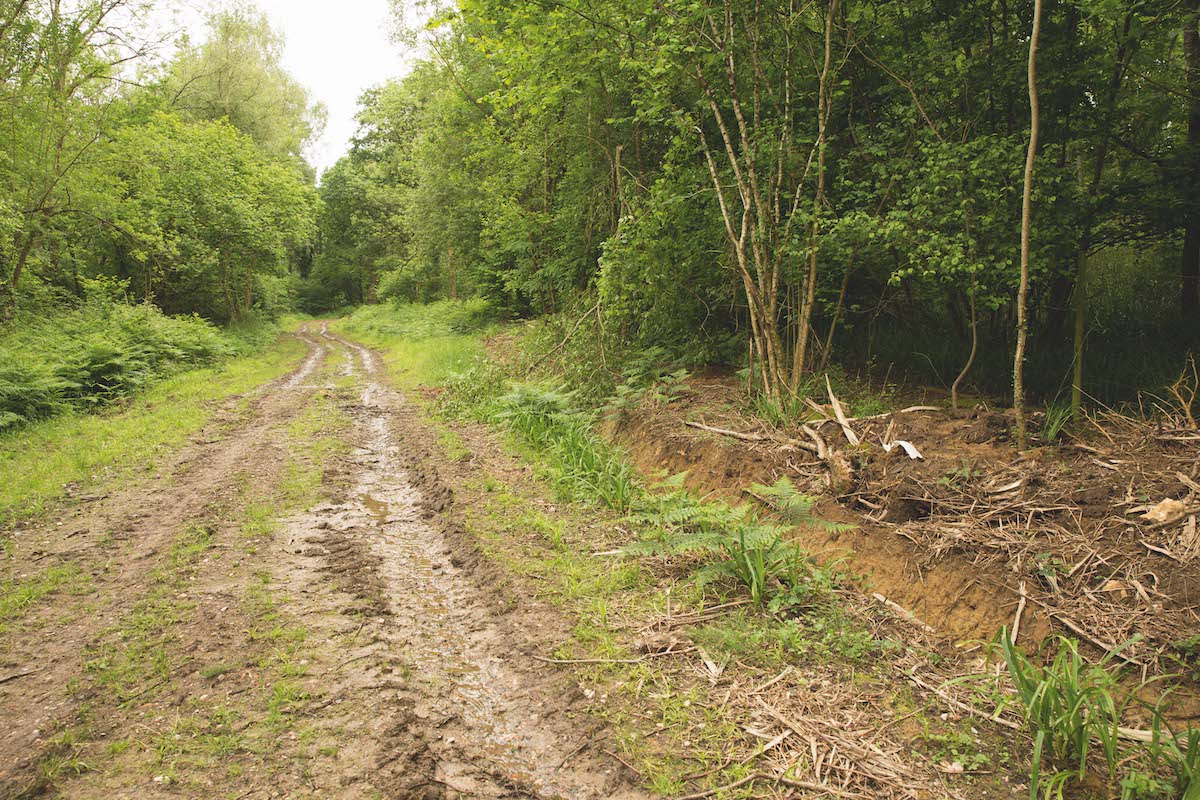
A track alongside a pen is ideal for moving eqiupment
Sizing
The pen should be as large as possible – the bigger the better, within reason. Along with a low stocking density, consider good ground and roosting cover. Mike is lucky in that he has large woodlands that provide excellent cover for the birds. This reduces stress, offers shelter from avian predators and the weather, and vegetation of varying levels creates a stepladder effect, allowing the birds access to roosting higher up when they are young. Roosting cover can be created by coppicing hazel, for example. Mike has tried using plastic owl decoys and hanging CDs from branches to deter avian predators, with mixed success. He says that there is no substitute for good cover. (Read these tips on repairing pheasant pens.)
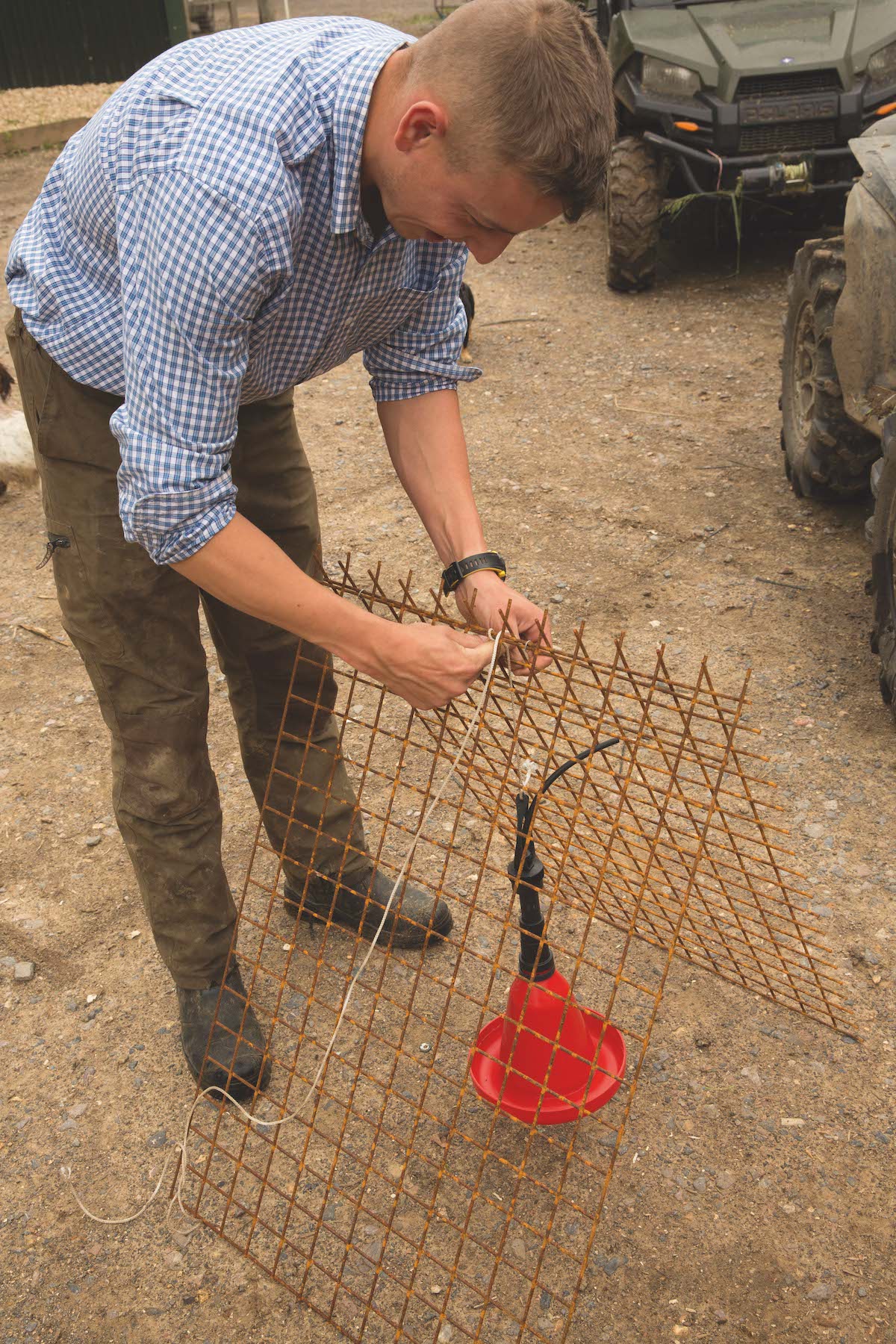
Underkeeper James fixes a drinker to a weld mesh structure
Water
Ideally, you have a track that runs alongside or into the pen, as this makes taking water and feed, or carrying out maintenance, a lot easier. One of the advantages of having a pen on a slight slope is that, if you are using a header tank rather than mains, gravity will help to distribute the water. However, remember that you will need access to the header tank to pump water into it.
Mike has come up with a way of placing drinkers off the ground that reduces the risk of disease. He uses sections of weld mesh placed in the fashion of an A-board, with the drinker suspended beneath. The mesh offers some protection from avian predators, is easily placed and the ends of the weld mesh deter birds from sitting on top of it and fouling the drinker with droppings, which again reduces the chance of disease.
With this system, if it becomes wet under the drinkers they can be moved to help prevent disease. It is vital that drinkers are thoroughly cleaned and sterilised before they are put into use.
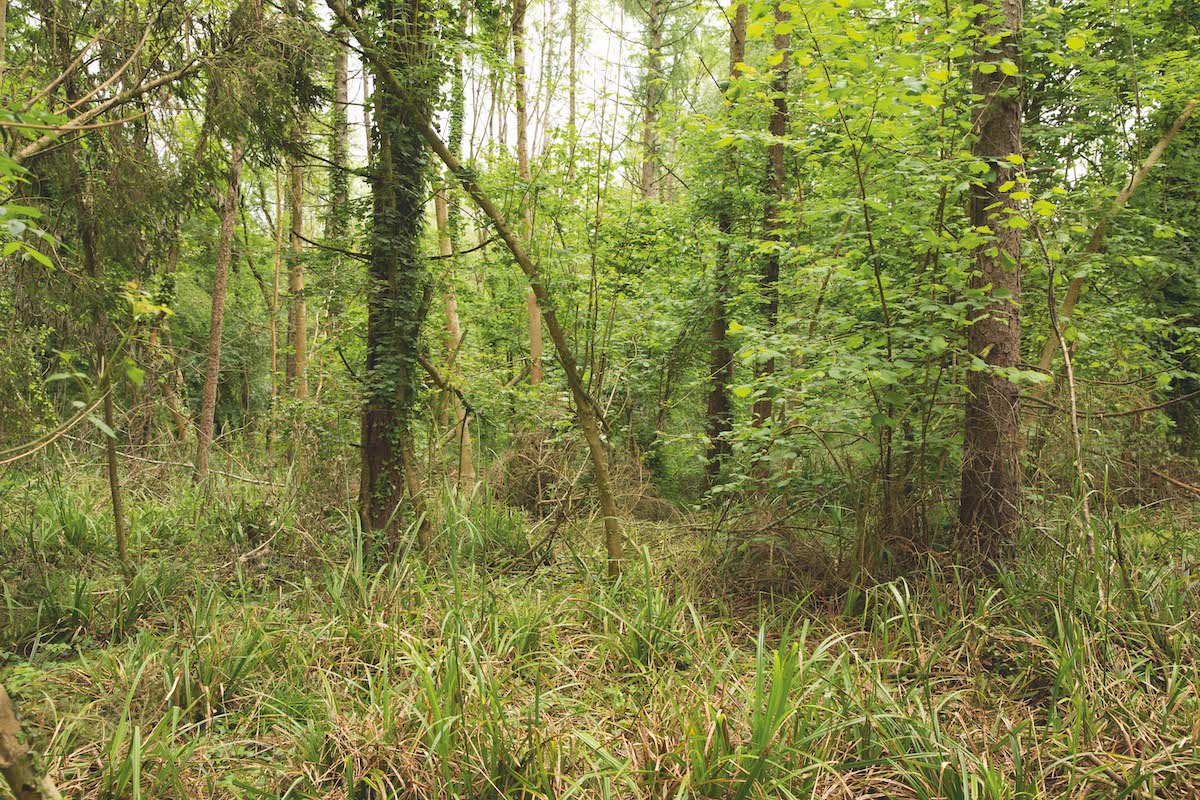
Cover of varying heights is ideal for the poults to explore, shelter and roost
Hoppers
Mike hopper-feeds his birds when they are in the pen for about three weeks, using the same feed and hoppers as the game farmer used, which he feels reduces stress on the birds as they are already familiar with both.
“Every time we fill the hoppers, they are moved a few yards to stop the area around the hopper becoming soiled with droppings and waste food, which when mixed together can be a perfect breeding ground for bacteria,” says Mike.
As the time for the birds to leave the pen approaches, Mike introduces trail feeding and starts to let the hoppers run dry, slowly acclimatising the birds to the change. He trail feeds twice a day and gradually increases the distance away from the pen. Hedges lead away from the pen to the drive as these can be trail fed and form natural routes that offer cover for the birds.
The siting of the pens should relate to the drives you intend to use on a shoot. Mike says: “The pens should be sited so that birds can be fed out from them to flushing points in cover crops or woodland. The birds will head back to the pen after the drive to roost as they have become familiar with it. It is, therefore, important during a drive that pickers-up try to avoid any release pens behind the Guns, so that the birds will find their way back there undisturbed.”
He adds that when poults begin to exit the pen and explore their territory, it is good practice to assess the ground surrounding the pen and how easy it is to work when dogging birds back to the pen or walking-in. It should be relatively easy ground to work. If it is impenetrable, then life can get harder.
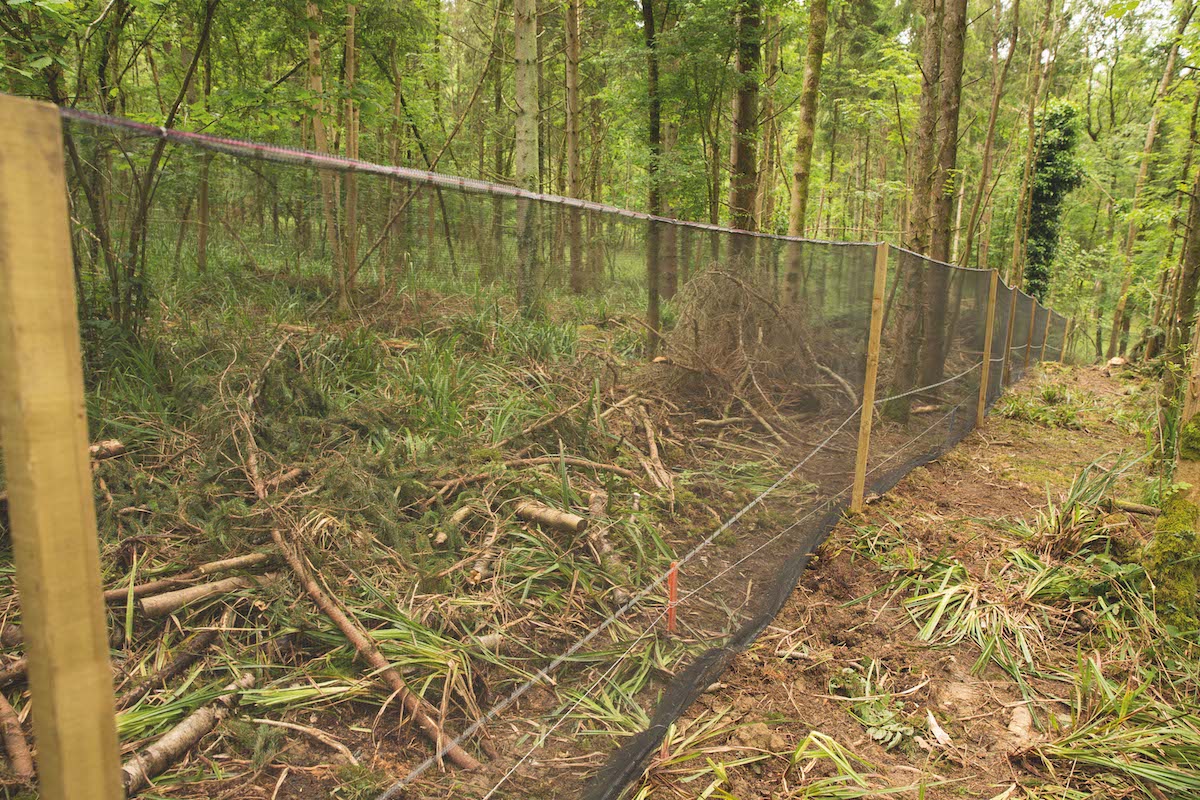
Mike uses scaffolding mesh for pens as it is light, cheap and strong
Materials
When it comes to materials for pens, Mike uses scaffolding netting. It is light, strong and cheaper than mesh, and offers a more yielding surface if birds fly into it. To prevent disease building up and to rest the ground, Mike likes to move his smaller pens, which hold around 1,000 birds, every three years. It is important to think ahead as to where the new pen may be sited in relation to an existing drive, or think about moving a pen and creating a new drive. Mike has 14 pens in total, with the largest being eight acres.
He says: “These pens are our main release pens and cannot be moved, but the smaller pens are easier to move and all that is required is the scaffolding mesh, some tall fence poles and an electric fence.
“The electric fence is key. Whether using wire mesh or netting, predators will dig underneath if the electric fence is absent or if it fails. Do not skimp on electric fencing – your birds are worth thousands.”
It is vital to check regularly for any fallen branches or trees that may have landed on the fencing, particularly after strong winds, and check that the electric fence wire is clear of any vegetation. Check that pop-holes are unobstructed. Mike likes to use long ‘wings’ or guides made of mesh that he feels are better at guiding the birds back into the pen.
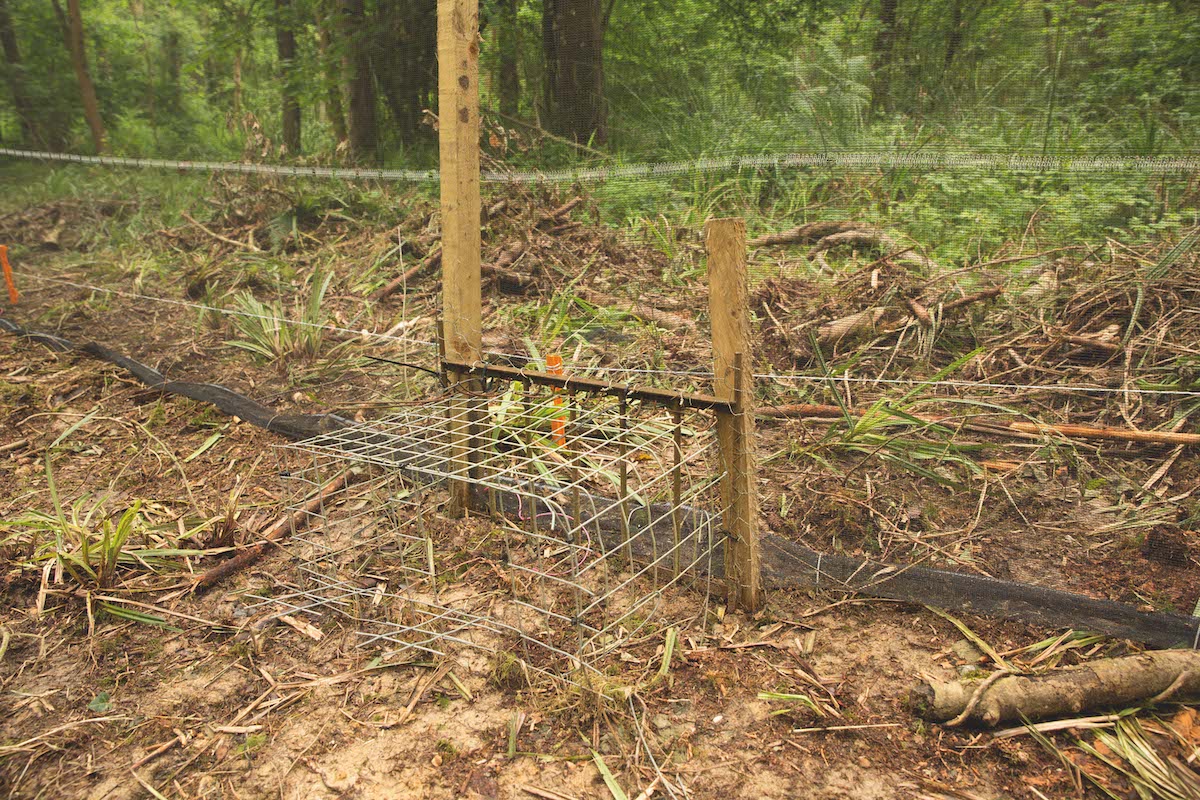
It is important to make sure that pop-holes are functioning properly
Precious poults
There is a lot more to building, siting and maintaining a release pen than meets the eye. As Mike says: “The birds are worth thousands and, even though they are not in the pens for longer than three weeks, it is so important to make it the most suitable environment that has everything for a newly released poult to settle into with the minimum of stress – somewhere they can call home and not wander off. They are your stock and, with possible shortages this season, they are more precious than ever.”
Related articles
Shooting
Shotgun
Let’s bite the bullet
The ban on lead shot for all game shooting is moving apace so it’s time to find the best eco-friendly ammunition that suits you and your rifle
By Time Well Spent
Shotgun
Shotgun buying guides
Starting out? Make sure it fits
If you’re buying your first clay gun, the right fit takes precedence – not good looks, the brand your mate’s got or even price – warns Paul Austin
By Time Well Spent
Manage Consent
To provide the best experiences, we use technologies like cookies to store and/or access device information. Consenting to these technologies will allow us to process data such as browsing behavior or unique IDs on this site. Not consenting or withdrawing consent, may adversely affect certain features and functions.
Functional Always active
The technical storage or access is strictly necessary for the legitimate purpose of enabling the use of a specific service explicitly requested by the subscriber or user, or for the sole purpose of carrying out the transmission of a communication over an electronic communications network.
Preferences
The technical storage or access is necessary for the legitimate purpose of storing preferences that are not requested by the subscriber or user.
Statistics
The technical storage or access that is used exclusively for statistical purposes.
The technical storage or access that is used exclusively for anonymous statistical purposes. Without a subpoena, voluntary compliance on the part of your Internet Service Provider, or additional records from a third party, information stored or retrieved for this purpose alone cannot usually be used to identify you.
Marketing
The technical storage or access is required to create user profiles to send advertising, or to track the user on a website or across several websites for similar marketing purposes.



